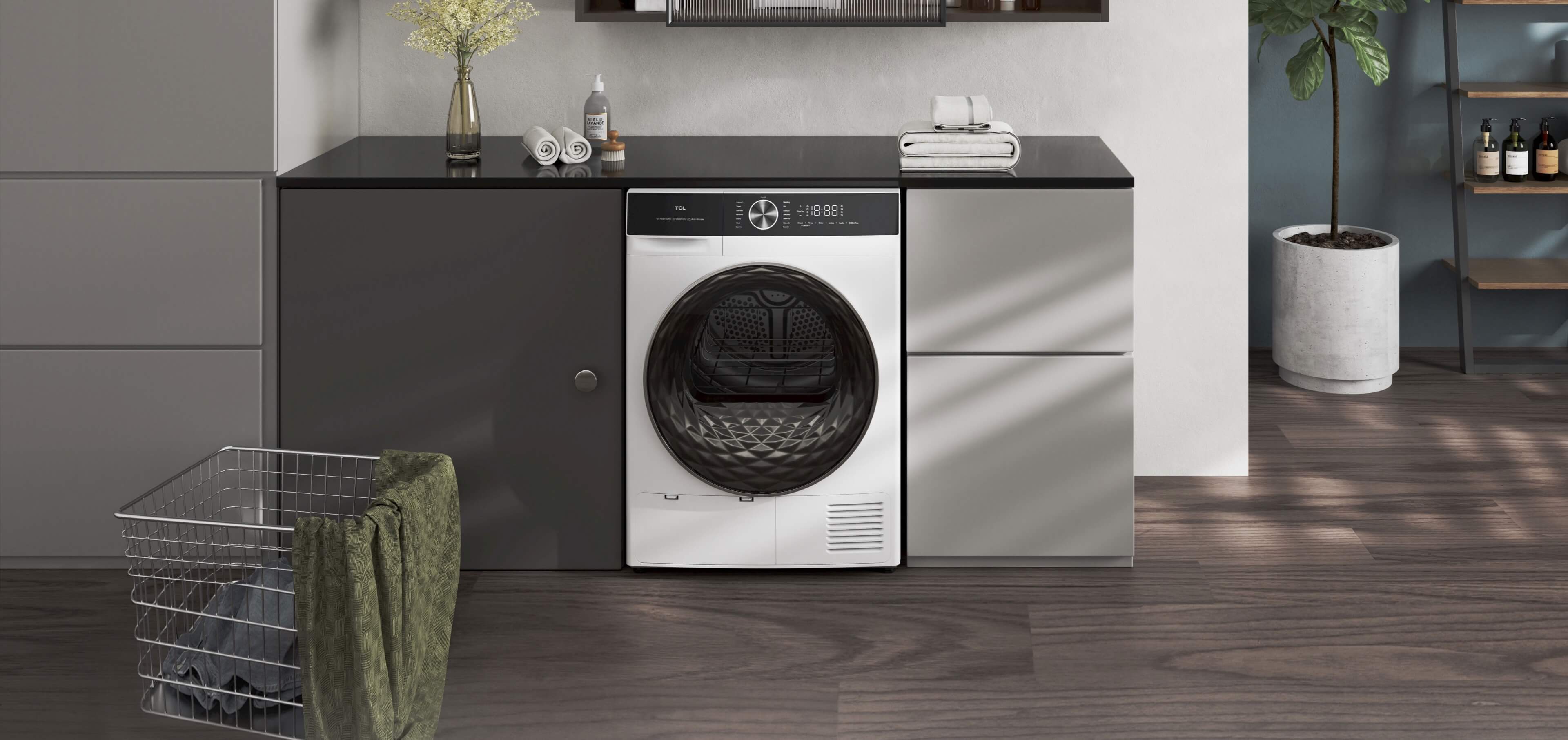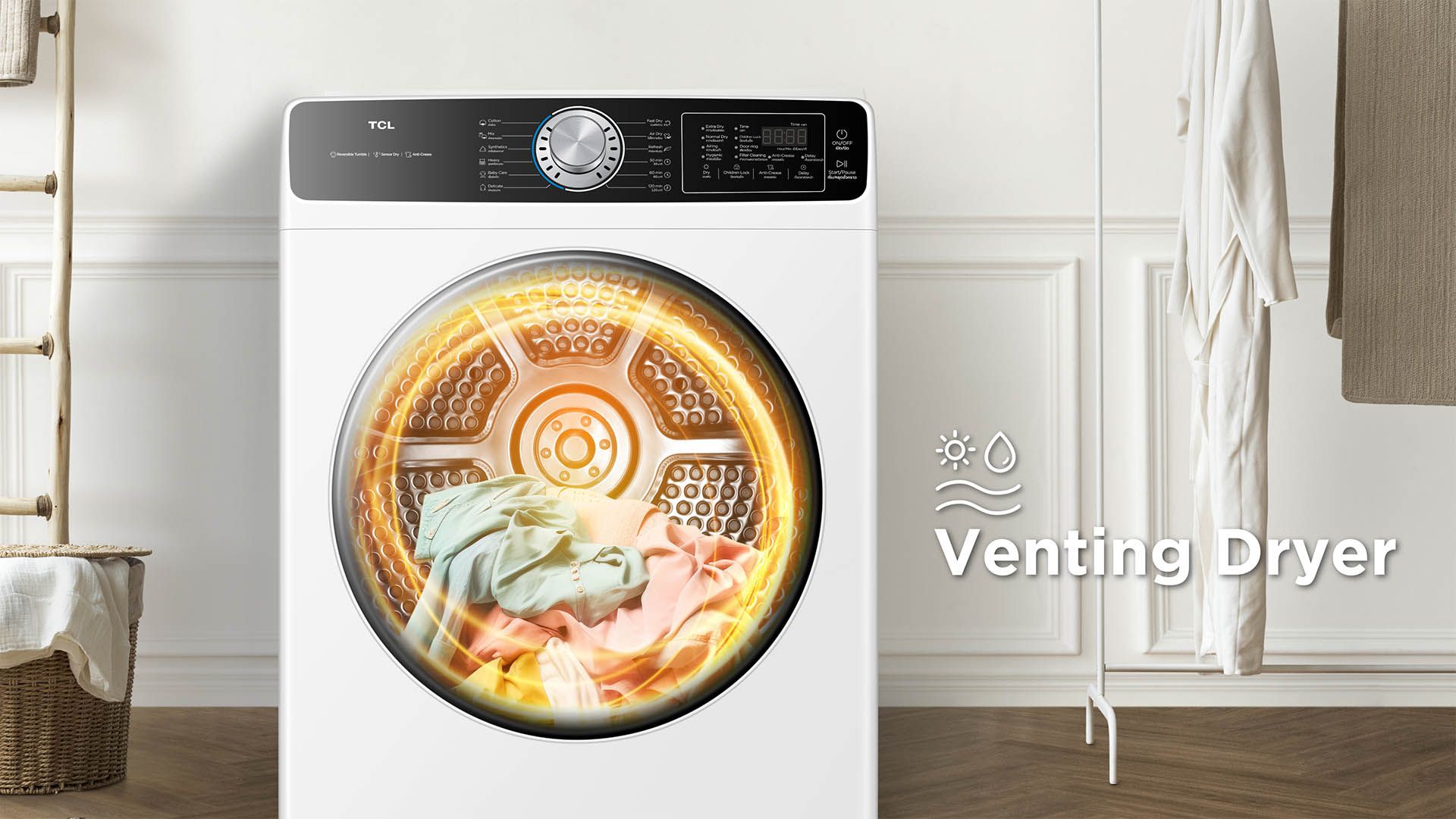Introduction
In today’s fast-paced world, dryers have become essential appliances in modern households, transforming laundry from a time-consuming chore into a quick and efficient task. Among the most popular options are heat pump dryers and vented dryers, each offering unique benefits and functionalities. Heat pump dryers are known for their energy efficiency and gentle drying process, while vented dryers excel in speed and simplicity. This blog aims to explain the key differences between these two types of dryers, providing you with the information you need to make an informed decision that best suits your laundry needs and lifestyle.
Overview of Heat Pump Dryers
Heat pump dryers utilize a closed-loop heat exchange system to absorb moisture from clothes and expel it as water, all while recycling the heat within the system. This technology not only conserves energy but also gently dries clothes at lower temperatures, leading to better preservation of fabrics. Key features often include various drying cycles for different fabric types, low heat settings, and moisture sensors for efficiency. While the energy-saving and gentle drying benefits are significant, the primary drawbacks are higher upfront costs and longer drying times compared to traditional dryers.
Overview of Vented Dryers
Vented dryers work by drawing in air from the surrounding environment, heating it, and then passing it through the tumbling clothes to evaporate moisture, which is then expelled outside through a vent. These dryers are known for their quick drying times and effectiveness, making them suitable for large volumes of laundry. Common features include straightforward operation, high-heat settings, and shorter cycle times. However, the downsides include higher energy consumption, the requirement for external venting, and potentially harsher conditions for delicate fabrics.
Key Differences Between Heat Pump Dryers and Vented Dryers
When choosing between heat pump dryers and vented dryers, it's essential to understand the fundamental distinctions between heat pump dryers and vented dryers, focusing on aspects such as energy efficiency, cost considerations, performance characteristics, installation requirements, environmental impact, and their overall lifespan and durability.
- Energy Efficiency
Heat pump dryers are markedly more energy-efficient than vented models due to their heat recycling mechanism. This results in lower operating costs over time despite the higher initial investment. - Cost Implications
Vented dryers generally have lower upfront costs but can lead to higher utility bills due to their energy-intensive operation. Conversely, heat pump dryers offer long-term savings on energy bills but come with higher purchase prices. - Performance
While vented dryers can dry clothes faster, heat pump dryers offer a gentler drying process, better suited for delicate and various fabric types, potentially extending the longevity of clothing. - Installation Requirements
Vented dryers need access to the outdoors for expelling moist air, which can limit their placement. Heat pump dryers are more versatile in installation since they don’t require venting to the outside. - Environmental Impact
Heat pump dryers have a lower carbon footprint and are more eco-friendly due to their reduced energy consumption, aligning with green household goals. - Lifespan and Durability
Heat pump technologies often come with fewer moving parts, which may result in a longer lifespan and durability, albeit with potentially higher repair costs.
Factors to Consider When Choosing Between Heat Pump and Vented Dryers
When deciding between a heat pump and a vented dryer, several factors come into play to ensure you choose the best option for your needs.
- Firstly, consider your household size and drying volume; for larger families with frequent laundry needs, a vented dryer may offer quicker drying times and higher capacity. However, a compact heat pump dryer could be more suitable for smaller households or apartments where space is limited.
- Climate and humidity also play a crucial role—heat pump dryers are more effective in humid environments, as they recycle warm air and use lower temperatures, while vented dryers work best in dry climates that can efficiently expel moisture.
- Utility availability is another key factor; heat pump dryers require an electric supply that handles higher power consumption, which may not be accessible in all homes.
- Lastly, personal preferences regarding noise and speed should be considered; vented dryers typically operate louder and faster, ideal for users who prioritize quick laundry turnaround, whereas heat pump dryers are quieter and gentler on fabrics, appealing to those who appreciate a more tranquil drying experience.
For example, a busy family in a humid area may opt for a heat pump dryer to manage their laundry efficiently, while a couple in a dry climate may prefer a vented dryer for its quick drying capabilities.
Making the Decision: Heat Pump vs Vented Dryer
If you're in the market for an efficient and reliable drying solution, look no further than the TCL Heat Pump Dryer C12DRW. This innovative dryer uses advanced heat pump technology to gently dry your clothes at lower temperatures, helping to preserve the fabric's quality while significantly reducing energy consumption.
With features like auto-dry settings, steam dry options, and anti-wrinkle functions, the C12DRW ensures your laundry comes out fresh and ready to wear without the hassle of ironing. Its environmentally friendly operation makes it a smart choice for eco-conscious consumers, while its sleek design adds a modern touch to any laundry room.
With features like auto-dry settings, steam dry options, and anti-wrinkle functions, the C12DRW ensures your laundry comes out fresh and ready to wear without the hassle of ironing. Its environmentally friendly operation makes it a smart choice for eco-conscious consumers, while its sleek design adds a modern touch to any laundry room.
For those seeking a powerful and efficient drying solution, the TCL Vented Dryer TDV100-F21W is an outstanding choice. This dryer features a generous 10kg capacity, making it ideal for busy households with large laundry loads. Equipped with advanced features like Sensor Dry technology, it ensures your clothes are dried thoroughly while preventing over-drying and damage.
The Anti-Crease function minimizes wrinkles, allowing you to spend less time ironing. With its user-friendly controls and reliable performance, the TCL TDV100-F21W combines speed and convenience, helping you tackle laundry efficiently.
The Anti-Crease function minimizes wrinkles, allowing you to spend less time ironing. With its user-friendly controls and reliable performance, the TCL TDV100-F21W combines speed and convenience, helping you tackle laundry efficiently.
Conclusion
Understanding the differences between heat pump and vented dryers is crucial for making a choice that aligns with your household’s drying needs, budget, and environmental concerns. By assessing the nuanced distinctions and considering TCL’s comprehensive range of dryers, you can select a solution that seamlessly integrates into your lifestyle and laundry routine.
Connect with us on Facebook, Instagram, Twitter & YouTube for the latest updates on our TCL Products and events.







